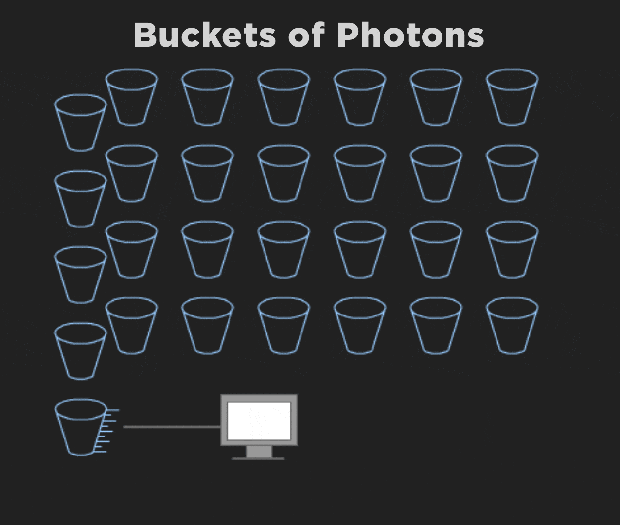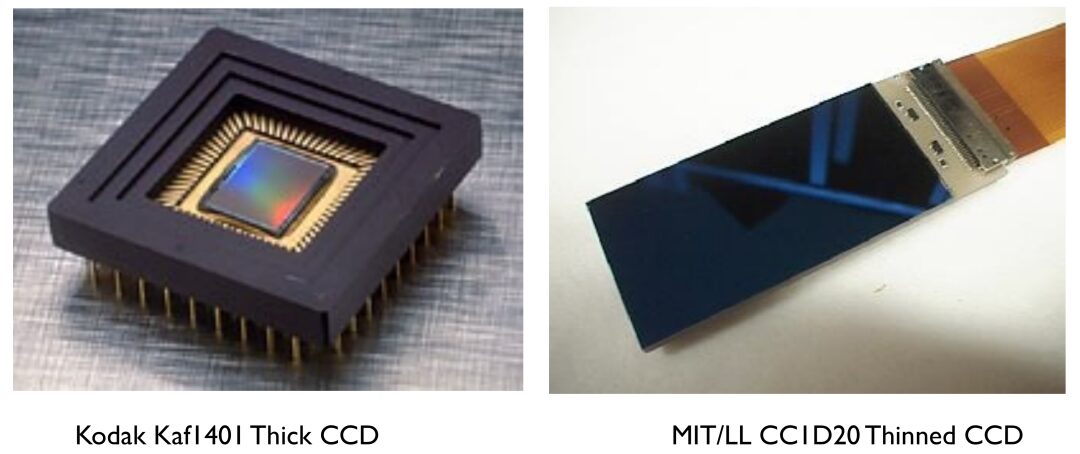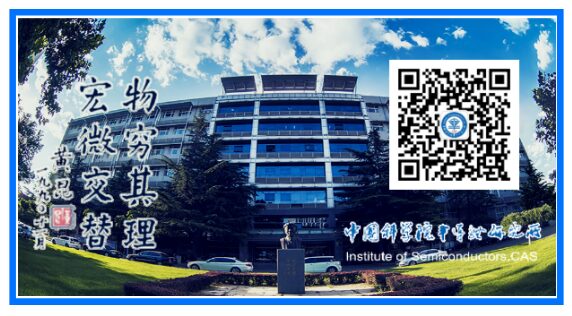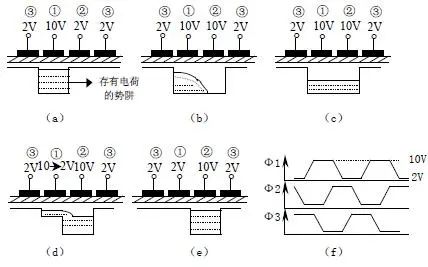
Charge transfer method in three-phase CCD.
(a) Initial state; (b) Charge transfers from electrode ① to electrode ②; (c) Charge is uniformly distributed under electrodes ① and ②; (d) Charge continues to transfer from electrode ① to electrode ②; (e) Charge is completely transferred to electrode ②; (f) Three-phase overlapping pulse.
Source: Literature [8]
(4) Signal charge detection: The fourth step in the CCD working process is the detection of charges, which is the process of converting the charges transferred to the output stage into current or voltage.
There are mainly three types of charge output: 1) Current output; 2) Floating gate amplifier output; 3) Floating diffusion amplifier output.
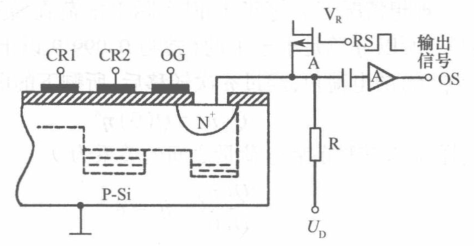
Charge detection circuit.
Source: Literature [8]
Schematic diagram of the CCD working process.
Source: Literature [6]
CCD image sensors are arrays composed of MOS (metal-oxide-semiconductor) capacitors arranged in a specific pattern.A very thin layer (about 120nm) of silicon dioxide is grown on a P-type or N-type silicon substrate, and then metal or doped polysilicon electrodes (gates) are deposited sequentially on the silicon dioxide thin layer to form a regular array of MOS capacitors, along with input and output diodes at both ends to form the CCD chip.
According to the different arrangements of pixels, CCDs can be divided into two main categories: linear arrays and area arrays.
Linear array CCDs scan one line at a time, and to obtain the video signal of the entire two-dimensional image, a scanning method must be implemented. Linear array CCDs can be further divided into single-channel linear array CCDs and dual-channel linear array CCDs.
Single-channel linear array CCD: Many transfer cycles, low efficiency. Only suitable for imaging devices with fewer pixel units.
Dual-channel linear array CCD: The number of transfer cycles is reduced by half, and its overall transfer efficiency is doubled compared to the original.
Linear array CCD.
Source: Literature [6]
Area array CCDs arrange the one-dimensional photosensitive units and shift registers of a linear array CCD into a two-dimensional array in a specific manner. This allows for the simultaneous exposure of the entire image.
Frame transfer area CCD—Advantages: Simple electrode structure, the photosensitive area can be very small. Disadvantages: Requires a larger area for the storage region.
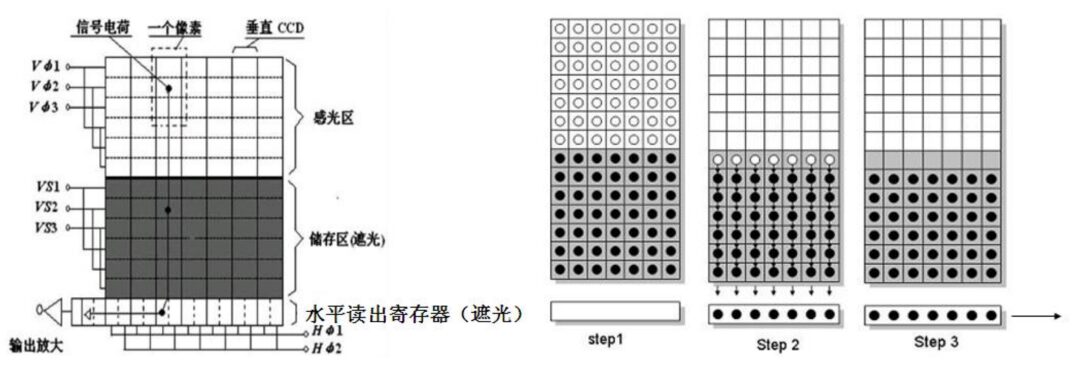 Frame transfer area CCD structure and working process.
Frame transfer area CCD structure and working process.
Source: Literature [6]
Interline transfer area CCD—Advantages: Significantly improved transfer efficiency. Disadvantages: More complex structure.
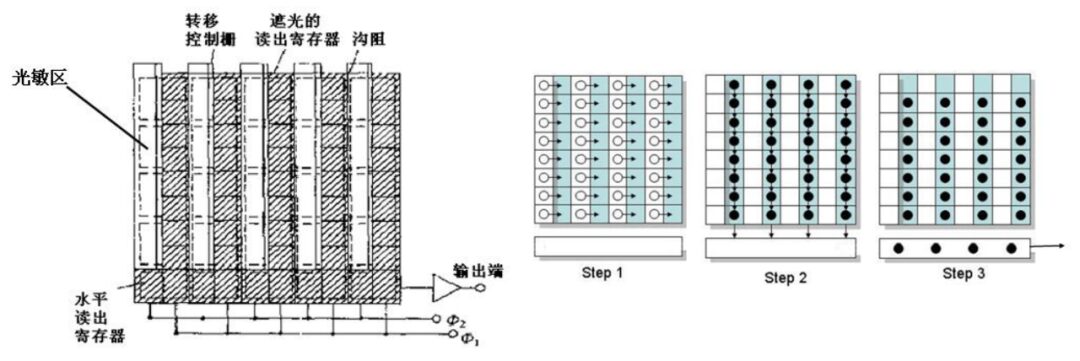
Interline transfer area CCD structure and working process.
Source: Literature [6]
Schematic diagram of CCD functions.
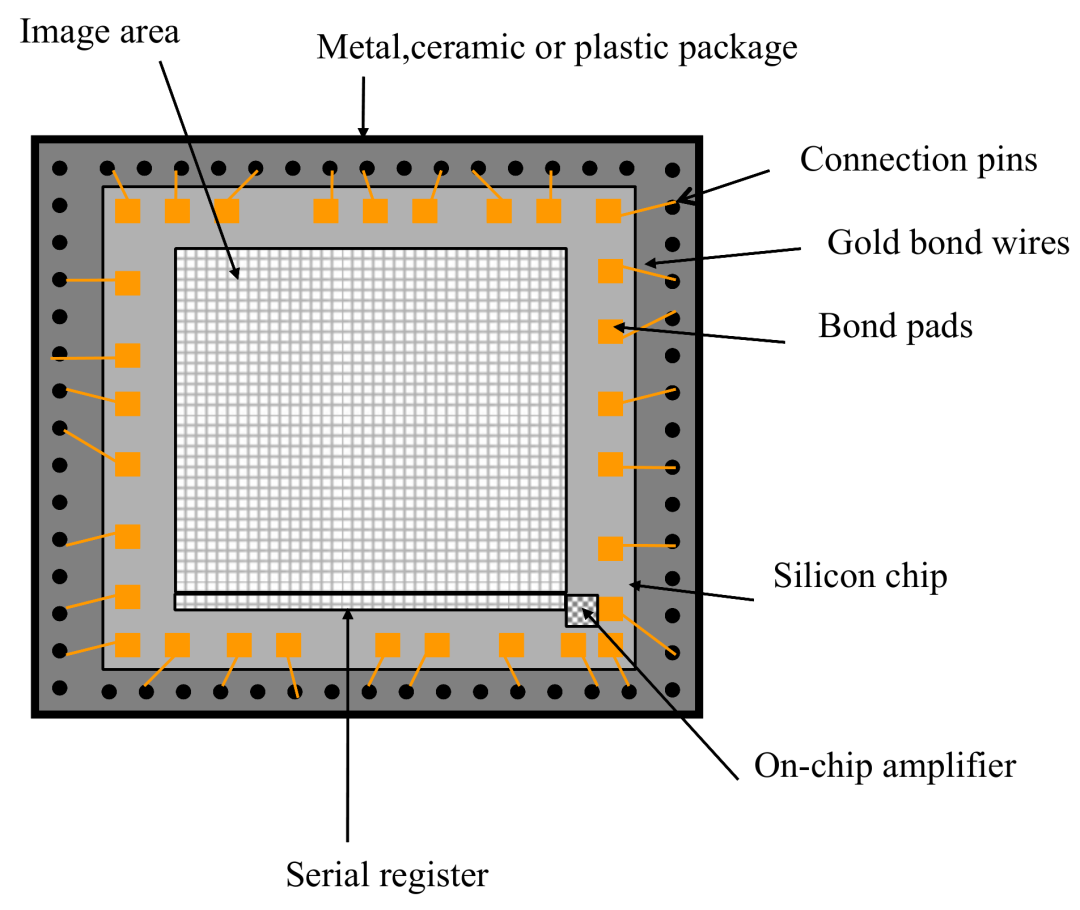
Structure of CCD chip.
Image source from the internet.
The invention of CCD is of epoch-making significance, as its emergence greatly expanded and extended the important organ of human information capture, the eye, by 85%.
Three main factors have promoted the rapid development of CCD: Firstly, CCDs are small in size, light in weight, consume little power, have ultra-low noise, a wide dynamic range, good linearity, reliability, and durability. Secondly, these devices can compete with vacuum tubes in terms of shape, speed, form quality, and cost. Thirdly, space imaging applications require new detectors.
In the 1970s, Bell Labs in the USA successfully developed the world’s first CCD, and its birth brought about a leap in imaging and video technology. In 1973, Fairchild applied CCD technology in the commercial field, manufacturing the first commercial CCD imaging device, paving the way for CCD in the industrial sector. By the late 1980s, CCD replaced electronic tubes in most video applications. In the 1990s, CCD was applied in resolution imaging and widely used in professional electronic photography, space exploration, X-ray imaging, and other scientific fields.
Two types of CCD products.
Image source from the internet.
The results of market applications have proven that CCD is a major technological revolution in the scientific field. After being overlooked for decades, it rightfully won the Nobel Prize in 2009.
Continuous Transformation
However, the progress of science and technology has never stopped. In 1998, the CMOS image sensor (Complementary Metal-Oxide-Semiconductor Image Sensor, CIS) was born. The photoelectric information conversion function of CMOS is fundamentally similar to that of CCD, with the difference being in the method of information transmission after photoelectric conversion. CMOS features simple information reading methods, fast output rates, low power consumption (about 1/10 of CCD chips), small size, light weight, high integration, and low cost. Starting in 2008, major manufacturers gradually began to use back-illuminated CMOS in various digital camera products. Since then, CMOS image sensors have rapidly developed.
CMOS replaces CCD.
Image source from the internet.
As technology continues to evolve, it is believed that more types of sensors will emerge in the future; it is just a matter of time. When we look back at the film era, the CCD era, and the CMOS era, we will surely marvel at the rapid development of technology.
-
https://www.nobelprize.org/prizes/physics/2009/summary/
-
Zhang Rujing. The Story Behind the Semiconductor Industry [M]. Tsinghua University Press, 2013.
-
Dong Yiting. Research on the Development of Photography Technology and Its Role in Contemporary Society [D]. Harbin Normal University, 2016.
-
Smith, G. E. (2009). “The invention and early history of the CCD.” Nuclear Instruments and Methods in Physics Research Section A: Accelerators, Spectrometers, Detectors and Associated Equipment 607(1): 1-6.
-
https://www.microscopyu.com/digital-imaging/introduction-to-charge-coupled-devices-ccds
-
https://www.mega-9.com/tech/tech-45.html
-
https://specinstcameras.com/what-is-a-ccd/
-
Wang Qingyou. Application Technology of Image Sensors [M]. Electronics Industry Press, 2019.
-
https://www.docin.com/p-505990925.html
-
http://dc.yesky.com/88/31913588all.shtml
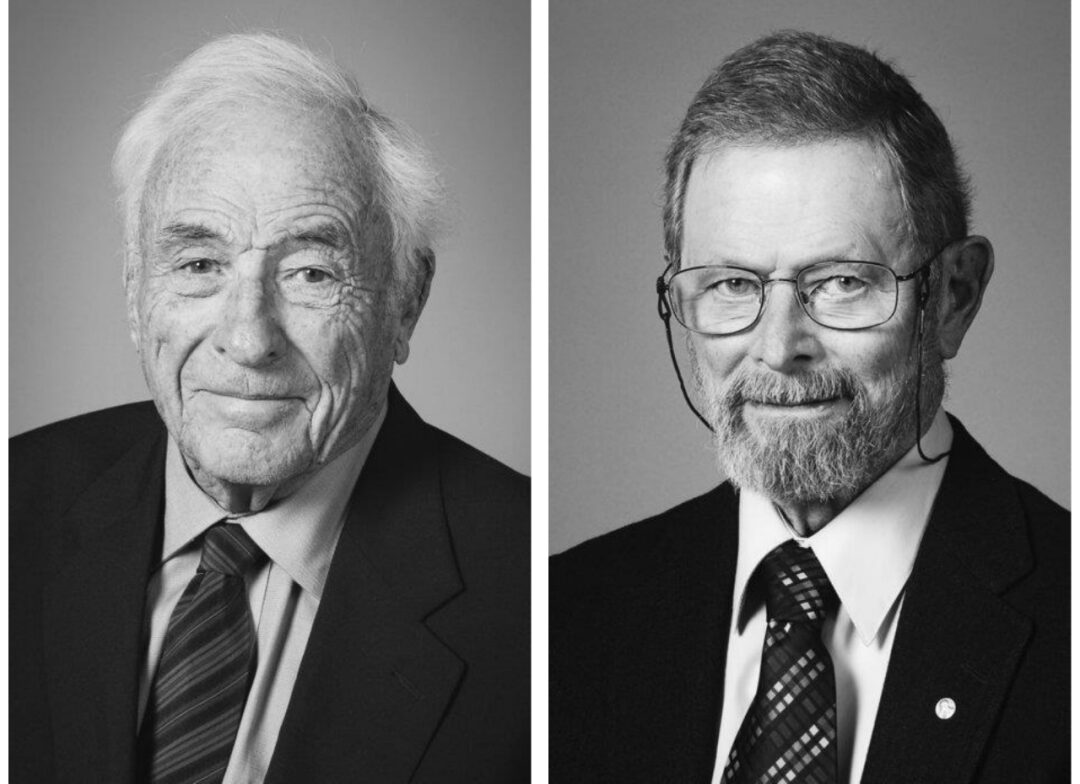
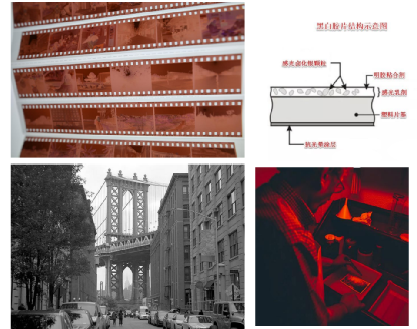
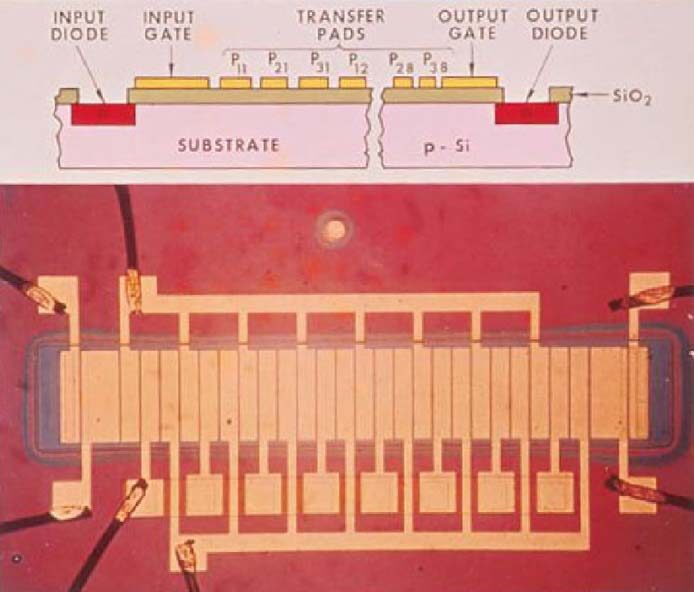
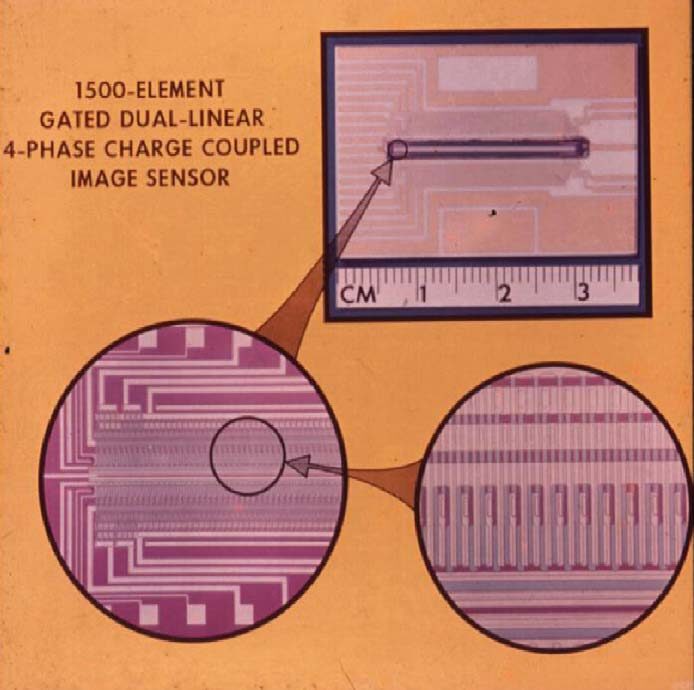
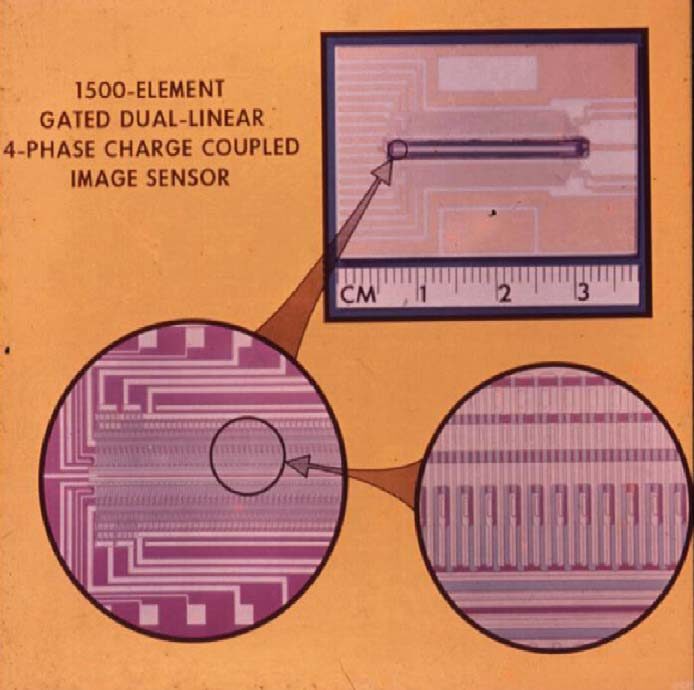
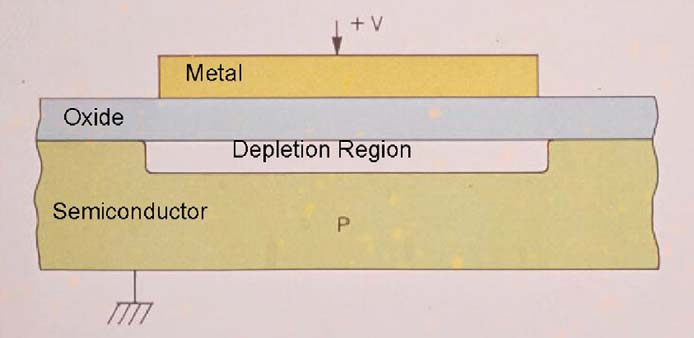
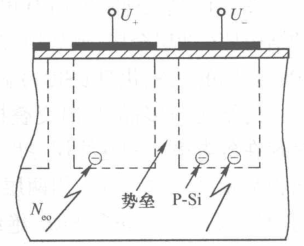

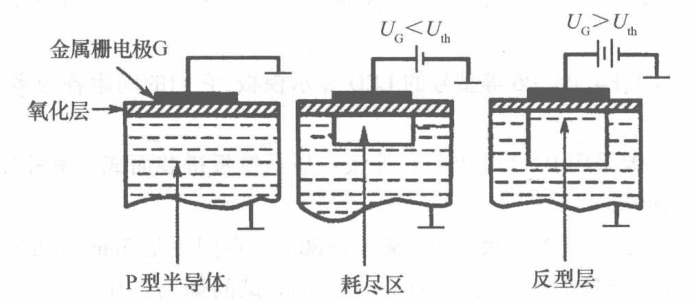
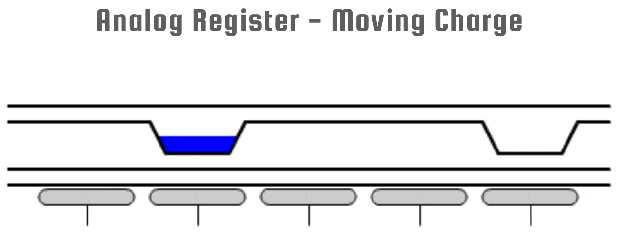


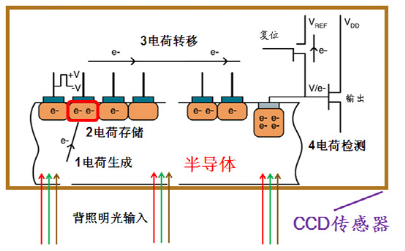
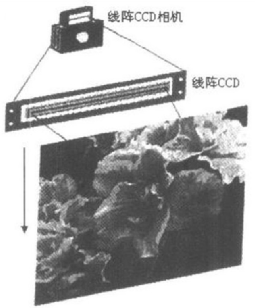
 Frame transfer area CCD structure and working process.
Frame transfer area CCD structure and working process.
